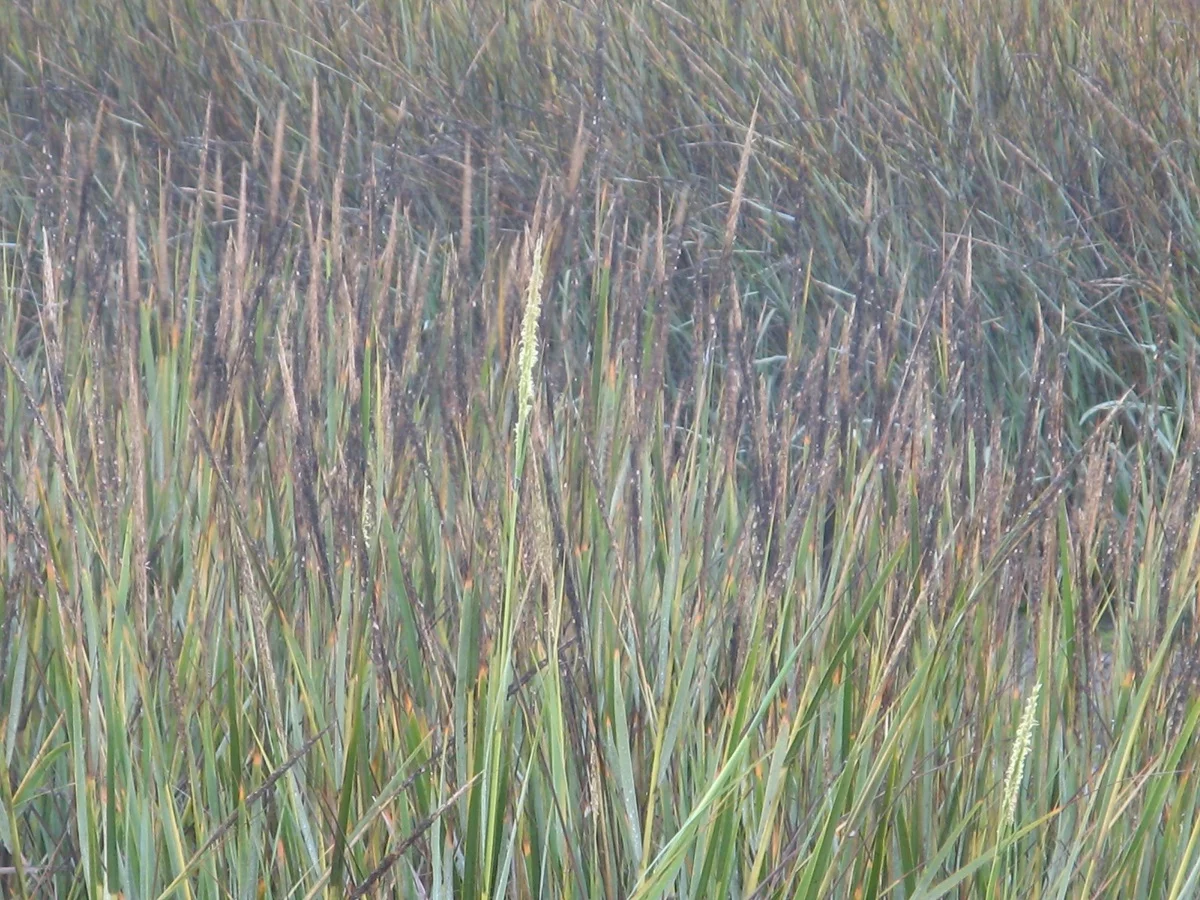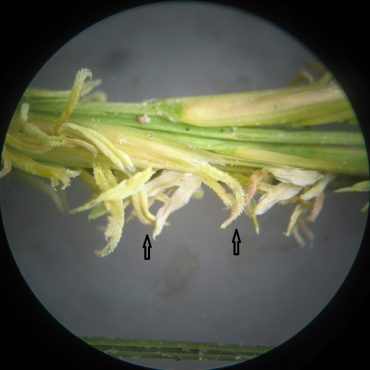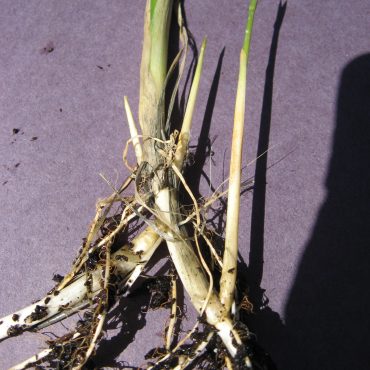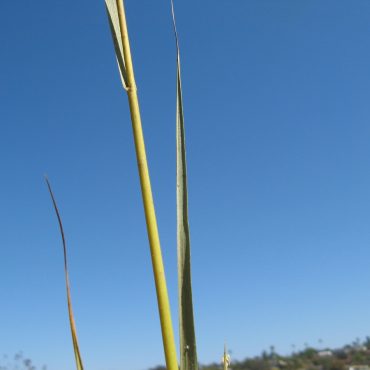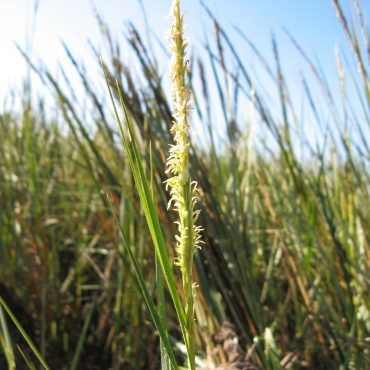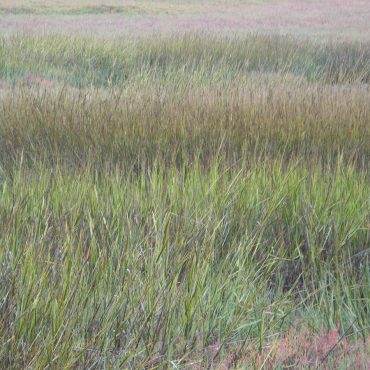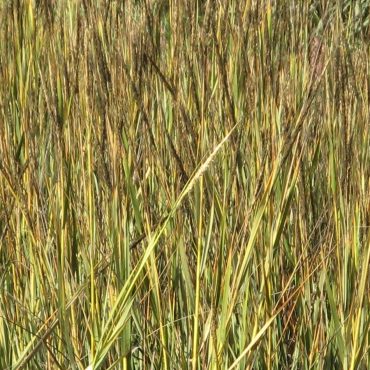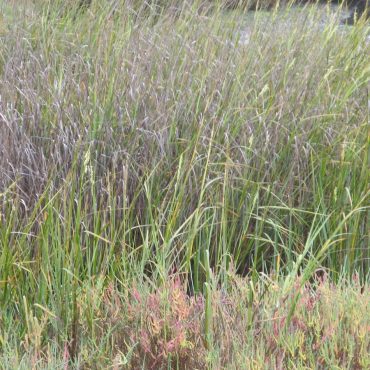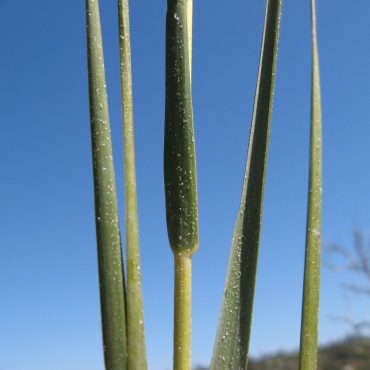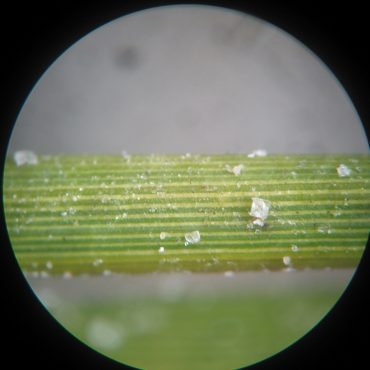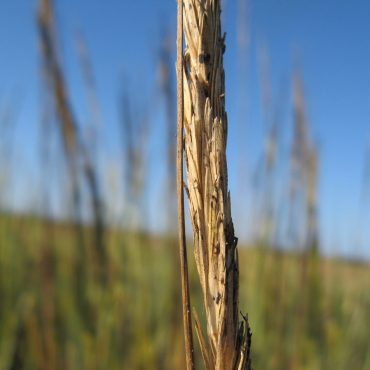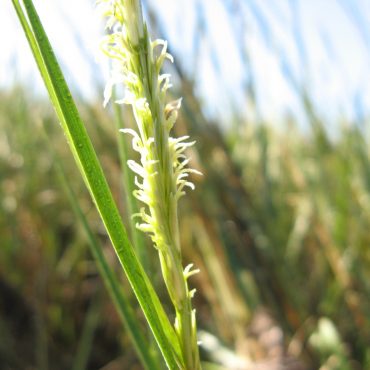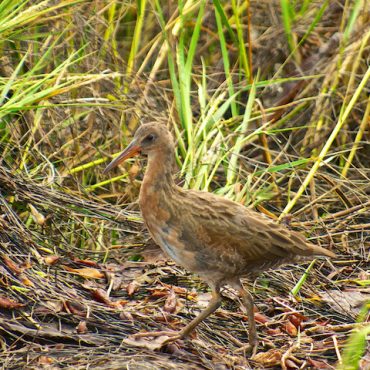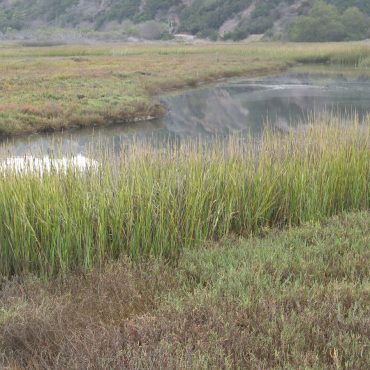Less than ten years ago, three small clumps of California cord grass first appeared in the salt marsh of San Elijo’s Central Basin. It was viewed with mixed feelings. Our native cord grass (Spartina foliosa) is the preferred habitat of the endangered Light-footed Clapper Rail (recently renamed Ridgway’s Rail). California cord grass is a welcome component of our saltmarsh ecosystem. However, several years ago, the East Coast species, smooth cord grass was introduced into San Francisco Bay where it quickly began hybridizing with the native species. The aggressive hybrids have out-competed the native cord grass and altered many acres of prime salt marsh. Morphological characteristics suggest that our recent arrival is the native species, but attempts to confirm this genetically have been inconclusive.
Since first seen, the cord grass has spread rapidly through West and Central Basin. Superficially it resembles bulrush and cattails, but it tolerates ocean salinities, and the flowers and seed heads are grass-like, rather than the tassels of bulrush or the hotdogs of cattails.
But what is it – friend, or hybrid foe? We are optimistic, but at this point, only the Ridgeway’s Rail knows for sure.

